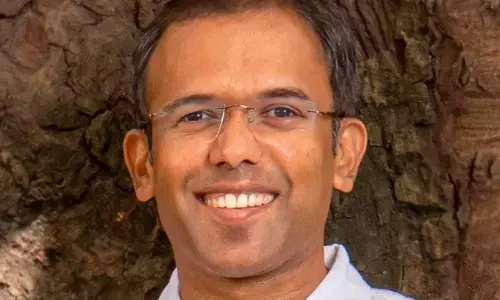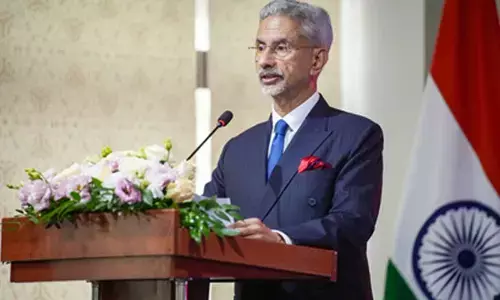Andhra Pradesh's desalination plants look paradoxical

The news that Andhra Pradesh is planning to go in for desalination plants in the State with Israeli technology comes as a surprise in fact.
The news that Andhra Pradesh is planning to go in for desalination plants in the State with Israeli technology comes as a surprise in fact. Desalination plants are a solution to the water problem no doubt, but for Andhra Pradesh to mull the same is ironical.
Andhra Pradesh is not exactly a water deficit State by any yardstick. Its problem is the run-off waters. Nearly 3,000 tmcft water flows waste into the sea every year through the Godavari and the Krishna rivers. Good monsoons and cyclones are also a feature that should ensure water surplus if the State goes in for careful planning.
If we talk of India, in general, the scenario may seem a bit different because fresh water is depleting fast in the country with the rise in consumption for economic activities. Same is the case of Andhra Pradesh too. Poor management of water resources has led to overexploitation of groundwater.
Is it necessary that Andhra Pradesh has to go in for these mega bucks plants seeking a solution to water shortage caused mainly due to mismanagement of water resources? The World Resources Institute's March 2016 report said 54 percent of India was water stressed, with scarcity affecting every part of the country except the Himalayan region and the ghats.
"Almost 600 million people are at higher risk of surface water supply disruptions," the report said, attributing water stress to climate change and poor water management. Andhra Pradesh too is stressed in a sense that rulers never planned to utilise the waters in a scientific manner. It is not as if the news has come just now. Back in 2014 itself, Andhra Pradesh had planned to set up a reverse osmosis desalination plant at Visakhapatnam with the help of IED technologies of Israel.
NASA pointed out that India's water tables are declining at a rate of 0.3 metres per year. Between 2002 to 2008, the country consumed more than 109 cubic kilometres of groundwater, which is double the capacity of India's largest surface water reservoir, the upper Wainganga (Economic Survey,2015-16 p 74).
The Global Runoff Data Centre, University of Hampshire and International Earth Science Information Networks have projected that around 30 percent area of India falls in the extreme water scarce zone having less than 500 cubic metre per person per year of renewable freshwater supply. Moreover, 50 percent of groundwater sources in the country are not "completely safe".
Of the 660 districts, groundwater in 276 districts has high levels of fluoride, 387 districts have nitrate over the safe level and 87 districts have arsenic as per the Central Groundwater Board report. Hence, desalination plants are always welcome.
But for a country of India's size and its population, even if it is planned by the individual States at their levels, it sounds odd that it is a viable alternative.
The cost of desalination plants is shocking, however cheap they might have become over a period. Such plants are good for low populations and there too the people will have to pay for it.
It is not a welfare programme and is tantamount to privatisation of water. Is the Chief Minister Jagan Mohan Reddy stirring yet another a hornet's nest?



















